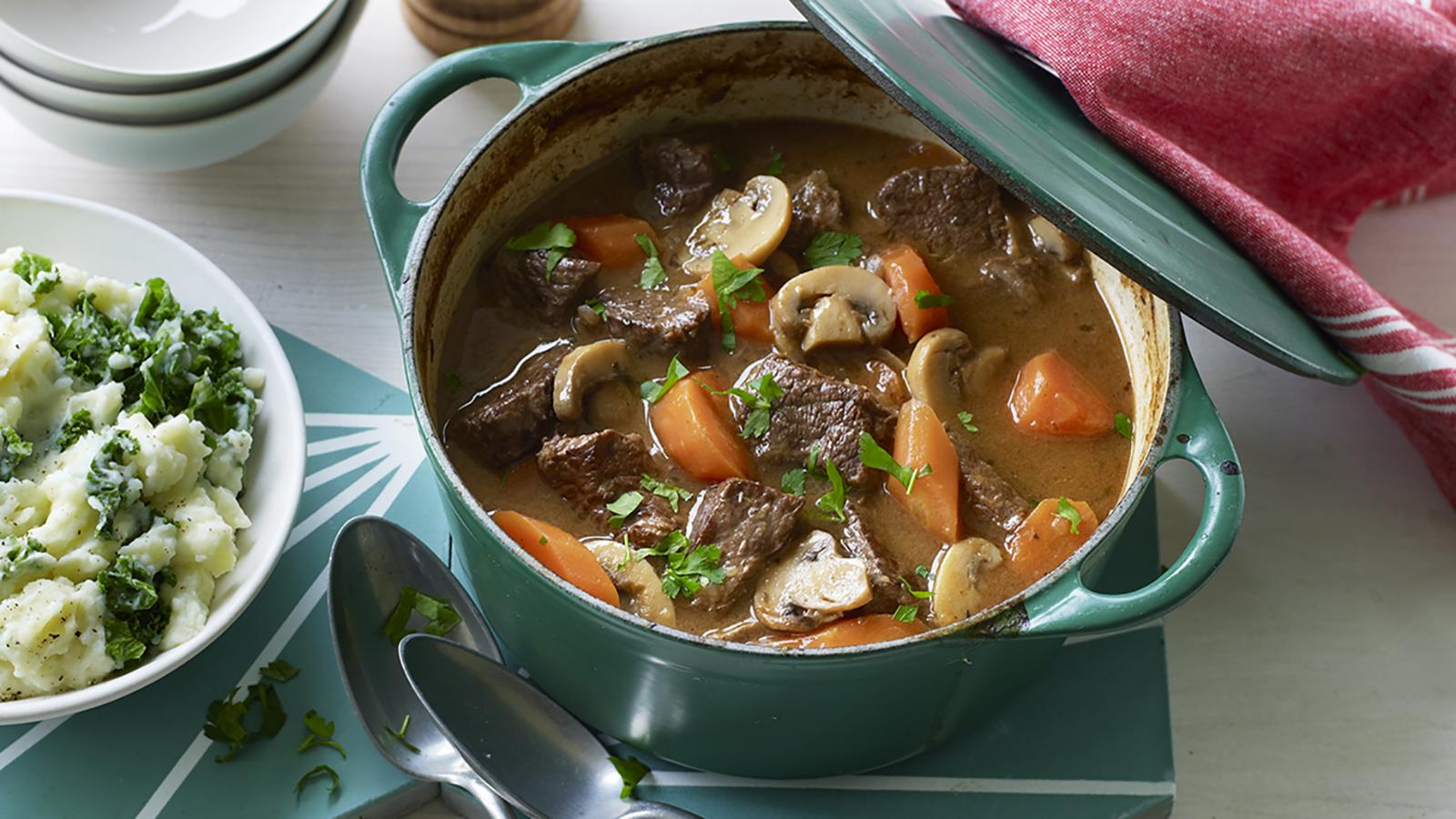Beef casserole, often interchangeably called beef stew, is the epitome of comfort food a hearty, slow-cooked dish that transforms tougher cuts of beef into tender, melt-in-your-mouth morsels enveloped in a rich, savory gravy. It’s a versatile dish that can be adapted to various cooking methods (stove, oven, slow cooker, pressure cooker) and ingredient preferences, making it a staple for family dinners, meal prepping, and chilly evenings.
The foundation of a great beef casserole lies in choosing the right cut of meat and patiently developing its flavors.
Choosing Your Beef:
The best cuts for a beef casserole are those that benefit from long, slow cooking, as this breaks down tough connective tissues, resulting in incredibly tender meat. Popular choices include:
- Chuck Roast/Stewing Beef: This is arguably the most common and recommended cut due to its excellent marbling and flavor. It holds up well to extended simmering without drying out.
- Brisket: Another flavorful cut that becomes incredibly tender when slow-cooked.
- Oyster Blade, Skirt, or Leg/Flank: These are also suitable and can often be found pre-cut as “stewing beef” in supermarkets.
Aim for beef cut into 1 to 1.5-inch cubes. If the pieces are too small, they might disintegrate into the sauce during the long cooking process.
The Essential Steps to a Delicious Beef Casserole:
- Browning the Beef: This is a crucial step that adds immense depth of flavor to your casserole. Heat a generous amount of oil (olive oil or a similar cooking oil) in a large, heavy-based pot or Dutch oven over medium-high heat until shimmering. Working in batches, brown the beef aggressively on all sides until a deep, caramelized crust forms. Do not overcrowd the pan, as this will steam the meat instead of searing it, preventing that essential browning. Remove the browned beef to a separate bowl.
- Sautéing Aromatics: In the same pot, add a little more oil if needed, and then add chopped onions, garlic, and often other root vegetables like carrots and celery. Sauté them until softened and lightly golden, scraping up any delicious browned bits from the bottom of the pan (this is called deglazing and adds a lot of flavor).
- Building the Flavor Base:
- Thickening Agent: Sprinkle flour over the sautéed vegetables and stir for a minute or two. This will help thicken the sauce later.
- Tomato Paste: Stir in tomato paste and cook for another minute. Tomato paste adds a concentrated umami flavor and richness.
- Liquids: Pour in beef broth (or stock) and red wine (optional, but highly recommended for depth). If using red wine, bring it to a simmer and let it reduce for a few minutes to cook off the alcohol. If you prefer not to use alcohol, you can substitute with more beef broth and a touch of brown sugar for balance.
- Seasonings & Herbs: Return the browned beef (along with any accumulated juices) to the pot. Add classic casserole herbs like bay leaves and fresh or dried thyme. Season generously with salt and black pepper.
- Slow Cooking for Tenderness:
- Stovetop: Bring the liquid to a gentle simmer, then reduce the heat to low, cover the pot, and cook for 1.5 to 2 hours, or until the beef is very tender. Stir occasionally to prevent sticking. Towards the end, you can uncover it for the last 30 minutes to allow the sauce to reduce and thicken further.
- Oven: Preheat your oven to 150-160°C (300-325°F). After assembling the casserole on the stovetop, cover the pot tightly and transfer it to the oven. Bake for 2.5 to 3 hours, or until the beef is fork-tender. Again, you can remove the lid for the final 30-45 minutes for a thicker sauce.
- Slow Cooker: Sear the beef and sauté the aromatics as above, then transfer everything to your slow cooker. Reduce the beef broth by about 1 cup compared to stovetop/oven methods, as less liquid evaporates in a slow cooker. Cook on low for 6-8 hours or on high for 3-4 hours, until the beef is wonderfully tender.
- Pressure Cooker: This method significantly reduces cooking time. After browning and sautéing, follow your pressure cooker’s instructions for beef stew, typically cooking on high pressure for 40-60 minutes, followed by a natural release.
- Adding Vegetables (Optional, but Recommended): For a complete meal, root vegetables like potatoes, carrots, and celery are often added. If using potatoes, add them about 30-60 minutes before the end of the cooking time (depending on their size and desired tenderness) so they don’t turn to mush. Other vegetables like mushrooms (added with aromatics) or peas (added in the last 10-15 minutes) are also popular additions.
Variations and Tips:
- Thickening: If your sauce isn’t as thick as desired, you can create a slurry by mixing equal parts cornstarch and cold water, then slowly whisking it into the simmering casserole until it reaches your preferred consistency. Alternatively, mashing some of the cooked potatoes or vegetables into the sauce can naturally thicken it.
- Flavor Boosters: A dash of Worcestershire sauce, a spoonful of balsamic vinegar, or a pinch of sugar can enhance the flavor profile and balance the richness.
- Make Ahead: Beef casserole often tastes even better the next day, as the flavors have more time to meld. It also freezes beautifully, making it an excellent option for meal prep. Store cooled leftovers in an airtight container in the refrigerator for 3-4 days or freeze for up to 3 months.
- Serving Suggestions: Serve your beef casserole with crusty bread for soaking up the rich sauce, mashed potatoes, rice, or a simple green salad.
A classic beef casserole is a timeless dish that offers comfort, flavor, and versatility, truly embodying the essence of home cooking.
